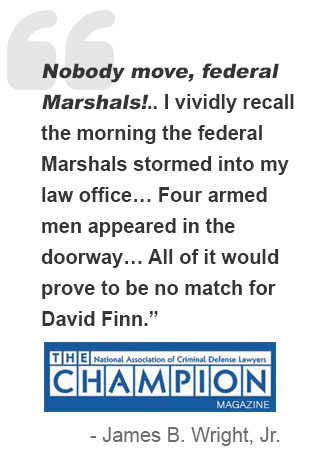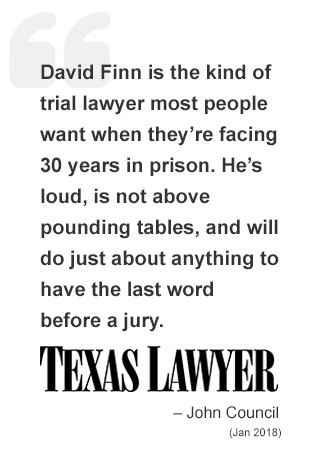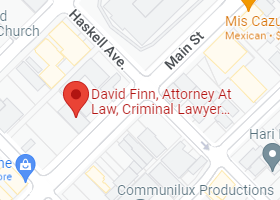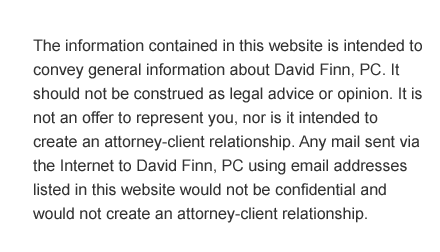


Library of Motions – Crawford Update
CRAWFORD UPDATE: POST
Davis v. Washington and Hammon v. Indiana
Erasing more than two decades of Confrontation Clause precedent, the Supreme Court held in Crawford v. Washington, 541 U. S. 36 (2004), that the Confrontation Clause prohibits the introduction of “testimonial” hearsay statements against a criminal defendant unless the defendant is afforded an opportunity to cross-examine the declarant, and that “[s]tatements taken by police officers in the course of interrogations are … testimonial.” Id. at 52. What was dispositive under prior doctrine-whether the statement is admissible under a “firmly rooted” hearsay exception, or is otherwise deemed to possess “particularized guarantees of trustworthiness,” Ohio v. Roberts, 448 U. S. 56, 65-66 (1980)-no longer mattered.
Crawford left open far more questions than it answered, and this led lower courts to reach wildly inconsistent results. Though the decision created the potential for a dramatic reduction in so-called “victimless” trials, in which the prosecution introduces the victim’s early accusatory statements to police without calling her to testify, whether that potential would be realized depended entirely on how narrowly or broadly its critical terms were to be construed.
What Crawford did not do was answer questions such as “What is testimonial” hearsay?” “What sort of police ‘interrogation’ results in testimonial statements?” “Could statements made to police, but not in response to questioning, qualify as testimonial?’ “How about statements to private parties?” “Business records, public records, and lab reports prepared with the expectation of potential prosecutorial use?” Could the introduction of nontestimonial hearsay ever violate the Confrontation Clause? The Crawford opinion strongly suggested a negative answer, but declined to “definitively resolve” the matter. Ib. at 61.
Clarification was desperately needed, and Davis v. Washington, and Hammon v. Indiana promised to provide it. Both cases involved allegations of domestic violence, a context in which “victimless” prosecutions had become prevalent under the Roberts regime, since complainants in such cases often become unwilling to testify, and prosecutors were routinely allowed to offer their uncross-examined early accusations as excited utterances. The trials in Davis and Hammon were both conducted before Crawford, and both prosecutions were based primarily on the admission of the nontestifying complainants’ initial accusations to law enforcement under the excited-utterance exception to the hearsay rule. These types of cases were the primary battleground in the lower courts trying to determine the scope of Crawford.
Davis involved accusatory statements made in a 911 call, a context in which appellate courts had nearly universally rejected arguments characterizing such accusations as testimonial. In Hammon, however, the prosecution was allowed to introduce a wife’s statements to police, who had responded to the scene of a reported domestic disturbance, that accused her husband of assaulting her, and lower courts were closely divided regarding the testimonial character of such crime-scene statements absent an opportunity to confront the declarant. Justice Scalia authored the opinion in both cases. The Court determined unanimously that the statements made during the early portion of the 911 call that were at issue in Davis were not testimonial, but held by a vote of 8-1, with Justice Thomas dissenting, that the statements to responding police by the defendant’s wife in Hammon were testimonial and hence inadmissible, since Ms. Hammon could not be cross-examined. Davis v. Washington, 122 S. Ct. 2266 (decided June 19, 2006) [The Supreme Court announced these decisions under the title of Davis v. Washington, so the references will be to this case style when discussing the rationale and ramifications.]
The Davis Court adopted a standard for police “interrogation,” ostensibly focusing on whether the “primary purpose” of the police, considered objectively, is to “meet an ongoing emergency” (resulting in nontestimonial statements) or to “establish past events … relevant to later … prosecution” (resulting in testimonial statements), that is so amorphous that it is likely to lead to the same kind of unpredictability for which the Crawford Court condemned Roberts. Adding to the confusion, the Court recognized elsewhere that an objective assessment of the declarant’s motive or expectation should play some role in the analysis, but did not elaborate further.
The Court’s discussion of Hammon signals the Court’s belief that most crime-scene accusations to police should be regarded as testimonial, and it dexision may lead to this outcome, in domestic violence cases and perhaps even more so in cases involving street crimes. The Supreme Court unmistakably regards accusatory statements to 911 operators as nontestimonial, unless it is apparent from the outset that the caller is merely reporting a past event, or when it becomes clear that an emergency situation no longer exists.
The Court also declared unreservedly, as part of its holding, that the introduction of nontestimonial hearsay no longer implicates the Confrontation Clause. Of course, defense counsel still should argue if possible that the statements at issue are inadmissible hearsay. Regarding some of the other Confrontation Clause issues left open by Crawford, Davis provides guidance, but not resolution.
Davis v. Washington
Adrian Davis was charged with violating an order of protection by assaulting his former girlfriend, one Michelle McCottry. She called 911 and said that Davis was beating her. During the ensuing four-minute conversation, the 911 operator elicited Davis’ full name (middle initial included), his date of birth, and the circumstances leading up to the alleged assault. After McCottry told the operator that Davis was running away, the operator elicited still more details about Davis and the incident. McCottry initially cooperated with the prosecutor’s office, but the prosecution was unable to locate her at the time of trial. In this pre- Crawford trial, the prosecutor successfully argued that the contents of the 911 call were admissible under the excited-utterance exception to the hearsay rule, overcoming defense counsel’s Confrontation Clause objection.
Hammon v. Indiana
Herschel Hammon, who the prosecution claimed had assaulted his wife Amy, was convicted of domestic battery. Shortly after a report of a domestic disturbance, two officers arrived at the Hammon home, and asked the alleged victim what had happened; she said “everything was okay.” An officer then spoke to Mr. Hammon, who sdaid that he and his wife had “been in an argument” that “never became physical.” That officer returned to Ms. Hammon, who was in another room, and asked her again what had occurred. This time, Amy Hammon made a detailed statement regarding the incidents up to and including the alleged assault. Immediately thereafter, the officer asked her to fill out and sign an affidavit reciting these allegations, and she did so. The prosecutor subpoenaed the complainant, but she was not present at trial. The trial court (pre- Crawford) admitted the oral statement as an excited utterance and the affidavit as a present sense impression.
The Supreme Court’s Decision
The Court’s self-described holding regarding whether statements elicited by police are testimonial ignores the declarant’s motive or reasonable expectation, and focuses instead solely on an objective assessment of the motivation of the interrogating officer:
Statements are nontestimonial when made in the course of
Police interrogation under circumstances objectively indicating
that the primary purpose of the interrogation is to enable police
assistance to meet an ongoing emergency. They are testimonial
when the circumstances objectively indicate that there is no
such ongoing emergency, and that the primary purpose of the
interrogation is to establish or prove past events potentially
relevant to later criminal prosecution.
126 S. Ct. at 2273-2274.
The majority opinion held that “formality is … essential to testimonial utterance.” 126 S. Ct. at 2278 n. 5. ( a reference to the argument that there be some “formality” to the giving of a statement before it is considered testimonial) The Court stated: “the solemnity of even an oral declaration of relevant past fact to an investigating officer is well enough established by the severe consequences that can attend a deliberate falsehood.” Id. at 2276 n. 5 (“it imports sufficient formality … that lies to such officers [by declarants] are criminal offenses”) More broadly, the opinion states, “we do not think it conceivable that the protections of the Confrontation Clause can readily be evaded by having a note-taking policeman recite the unsworn hearsay testimony of the declarant, instead of having the declarant sign a deposition.” Id. 2276 (emphasis as written). And, the Court declared, “restricting the Confrontation Clause to the precise forms against which it was originally directed is a recipe for its extinction.” Id. at 2278 n. 5 The Court thus dispelled fears that the promise of Crawford would be extinguished by an exceeding narrow construction.
Applying this standard in Davis, the Court stressed that McCottry “was speaking about events as they were actually happening, rather than “describing past events.” 126 S. Ct. at 2276 (emphasis as written; citation omitted). Thus, any reasonable listener would recognize that McCottry … was facing an ongoing emergency.” Id. And “the nature of what was asked and answered in Davis, viewed objectively,” including “the operator’s effort to establish the identity of the assailant.” “was such that the elicited statements were necessary to be able to resolve the present emergency, rather than simply to learn … what had happened in the past.” Id. (emphasis as written). Moreover, the Court continued, the level of “formality” in the police interview was much less that in Crawford, since the Crawford declarant was “responding calmly, at the station house, to a series of questions,” whereas “McCottry’s frantic answers were provided over the phone, in an environment that was not tranquil, or even … safe” Id at 2276-2277.
For all these reasons, the Court said, “the circumstances of McCottry’s interrogation objectively indicate is primary purpose was to enable police assistance to meet an ongoing emergency. She simply was not acting as a witness; she was not testifying. … No ‘witness goes into court to proclaim an emergency and see help.” Id. at 2277 (emphasis as written).
The Court did acknowledge, however, regarding the 911 operator’s elicitation of additional information from McCottry after the emergency “appears to have ended,” that “it could readily be maintained that, from that point on, McCottry’s statements were testimonial.” Id.
Deciding Hammon in the defendant’s favor, the Court significantly declared that “[determining the testimonial or nontestimonial character of the statements {at issue there} is a much easier task” than in Davis. Id. at 2278. The Court found it “entirely clear” that the interrogation of Amy Hammon was “part of an investigation into possibly criminal past conduct;” Amy Hammon related “how potentially criminal past events began and progressed,” “at some remove in time from the danger she described.” Id. at 2278, 2279. Moreover, there was “no emergency in progress;” “the interrogating officer … had heard no arguments or crashing and saw no one break or throw anything.” Id. at 2278. Amy Hammon had originally told police that “things were fine,” and the officers prevented Mr. Hammon from interfering with the questioning of his wife. Id. Statements such as those of Amy Hammon are “an obvious substitute for live testimony, because they do precisely what a witness does on direct examination; they are inherently testimonial.” (emphasis as written).
More generally, the Court stated that it was not holding that “no questions at the [crime] scene will yield nontestimonial answers.” Id. at 2279 (emphasis as written) Regarding domestic disputes, responding officers will “need to know whom thay are dealing with in order to assess the situation, the threat to their own safety, and possible danger to the potential victim.” Id., quoting from Hiibel v. Sixth Judicial Dist. Court of Nev., Humboldt Cty., 542 U. S. 177, 186 (2004). Such “exigencies,” the Court continued, “may often mean that ‘initial inquiries’ produce nontestimonial statements. But in cases like this one, where Amy’s statements were neither a cry for help nor the provision of information enabling officers immediately to end a threatening situation, the fact that they were given at an alleged crime scene and were ‘initial inquiries’ is immaterial.” Id. (emphasis as written).
The Court reaffirmed its pronouncement in Crawford that a defendant forfeits his right to invoke the Confrontation Clause if he procures the declarant’s absence at trial through his misconduct. Id. at 2280. Unfortunately, it then went further and seemed to encourage a broad conception of the forfeiture doctrine. Although the opinion cautions that the Court “takes no position” regarding the standards necessary to prove forfeiture, it noted that federal and state courts have “generally held the prosecution to a preponderance-of-the-evidence standard,” and quoted approvingly from a Massachusetts decision that apparently permitted the prosecution to rely on the declarant’s out-of-court statements themselves when determining their admissibility. The Court also said nothing about enforcement of a strict unavailability requirement before the doctrine could be invoked.
Davis ’ Reasoning and Ramifications Regarding Accusations Made in the Immediate Aftermath of a Crime.
Particularly regarding domestic-violence cases, this is a dangerous decision for criminal defendants, because it contains something for everyone. When language is included in a Supreme Court decision that judges can cite as a justification for refusing to enforce a right, they usually jump on it. Such language is abundant here.
The court’s focus on the ‘primary purpose” of the police questioning is dubious analytically. Though the purpose of the Crawford inquiry is to determine whether the declarant should be considered a “witness” for purposes of the Confrontation Clause, the Court nevertheless seems to require lower courts to resolve that question from a perspective that renders the declarant’s motive or reasonable expectation irrelevant. The test also creates the potential for police manipulation. Though the court is careful to couch the standard in objective terms, going so far as to declare that police “saying that an emergency exists cannot make it so,” 126 S. Ct. at 2279 n. 6, it will be difficult for courts to ignore an officer’s claim that he believed that an emergency was in progress when he questioned the declarant. The Davis standard may lead some officers to question a suspected victim of domestic violence before ensuring her safety, in order to obtain evidence from a declarant who may well be reluctant to testify.
The “primary purpose” test standard is not susceptible of easy application. The police often have two purposes in questioning witnesses shortly after a crime, to respond to the emergency situation and to gather evidence.” A judge required to resolve which purpose is “primary” has a difficult task.
Justice Scalia’s opinion suggests elsewhere that the declarant’s motive or reasonable expectation may be important after all. The Court discussed the statements at issue in Davis from the declarant’s viewpoint when it characterized them as “plainly a call for help” rather than a “narrative report of a crime absent any imminent danger.” Id.126 S. Ct. at 2276, and said that McCottry was not “acting as a witness,” or “testifying.” Id. at 2277. More directly, the Court looked to the declarant by stating that “it is in the final analysis the declarant’s statements, not the interrogator’s questions, that the Confrontation Clause requires us to evaluate,” Id. at 2274 n. 1 and that “police conduct” cannot “govern the Confrontation Clause; testimonial statements are what they are.” Id. at 2279 n. 6.
These pronouncements leave room for arguments that the declarant’s motive or reasonable expectation should factor into the analysis. They also provide the basis for advocating a declarant-centered focus when arguing the testimonial character of statements not obtained through police interrogation.
The Court’s language and reasoning suggest its belief that most crime-svene accusations to police are testimonial. It does this, first, by declaring that deciding Hammon was a “much easier task” than deciding Davis. Id. at 2278. Second, it repeatedly stressed the Court’s view that the critical factor distinguishing Hammon (and Crawford) from Davis was that in the former two cases, the officers were trying to determine whether past conduct was criminal, rather than to evaluate the status of an emergency still in progress. Id. at 2276-2279. Officers responding to most reports of crime will know in advance that the reported incident is likely to be over. The Court’s emphasis on the investigation officer in Hammon having “heard no arguments or crashing” and seen “no one throw or bread anything” could give rise to an argument that crime-scene statements should be recognized as testimonial unless it is apparent to the officer that the domestic disturbance is still in progress. Even regarding 911 calls, the court recognized the possibility that statements made after the operator has ascertained that the emergency is over Id. at 2277, or “providing a narrative report of a crime absent any imminent danger,” Id. at 2276, should be considered testimonial.
Outside the context of domestic violence, the court’s focus on whether an emergency situation persists should lead most courts to recognize that statements to police at the scene of street crimes must generally be regarded as testimonial. In such cases, the defendant usually will have fled the scene before the police arrive, rendering fatuous any claim of a continuing emergency.
Nevertheless, the opinion contains language likely to hearten prosecutors, suggesting, for example, that potential “exigencies” in domestic violence cases, creating a need for officers to ascertain whether they and/or the victim may be at risk,”may often mean that ‘initial inquiries’ produce nontestimonial statements.” Id. at 2279. The Court also noted Amy Hammon’s initial report that “things were fine,” and that she was interviewed “in a separate room, away from her husband,” who had been “forcibly prevented” from “participating in the interrogation.” Id. at 2278. Officers often question the possible victim without receiving any representation concerning her safety, and before they have determined the location of her alleged assailant.
The Court also noted that the declarant in Davis gave “frantic” answers to the 911 operator, which may be seized upon by judges like those who have previously viewed “excited utterances” as inherently nontestimonial. One thing that should be clear from the result in Hammon, however, is that is can no longer be maintained that the factors that may qualify a statement as an “excited utterance” also necessarily make it nontestimonial.
What about statements not made in response to detailed police questioning? The Davis Court addresses this topic in an important footnote, stating:
Our holding refers to interrogations because …the statements in the
cases presently before us are the products of interrogations –
which in some circumstances tend to generate testimonial responses.
This is not to imply, however, that statements made in the absence
of any interrogation are necessarily nontestimonial. The Framers
were no more willing to exempt from cross-examination volunteered
testimony or answers to open-ended questions than they were to
exempt answers to detailed interrogation. …And, of course, even
when interrogation exists, it is in the final analysis the declarant’s
statements, not the interrogator’s questions, that the Confrontation
Clause requires us to evaluate.
126 S. Ct. at 2274 n. 1
Though this footnote is dictum, it establishes the Court’s viewpoint that volunteered statements to police, and statements in response to open-ended questioning such as “what happened,” may be testimonial in nature, and that the declarant’s motivation or reasonable expectation may be decisive in resolving such questions.
The Impact of Davis Upon Other Questions Left Unanswered By Crawford
Once again, the Supreme Court refused in Davis to provide an overarching definition of “testimonial” hearsay. But the declarant-centric language in Davis’ fn. 1 and elsewhere supports the argument that the declarant’s expectation/motivation is relevant not only to whether statements to police are testimonial, but to an overall understanding of the term “testimonial” hearsay as well.
Regarding whether statements to private parties can be testimonial, Davis contains some language that is encouraging, particularly considering that nearly all courts after Crawford had flatly refused to declare any statement not made to law enforcement officials or their agents to be testimonial. Davis specifically reserved the question of “whether and when statements made to someone other than law enforcement are ‘testimonial.’” 126 S. Ct. at 2274 n. 2 Moreover, it approvingly discussed an English common-law decision, King v. Brasier, 168 Eng. Rep. 202 (1799), excluding a nontestifying child rape victim’s statement made to her mother “immediately upon coming home,” that related “all the circumstances” of the incident. 126 S. Ct. 2274 n. 2
Did Davis say anything relevant regarding the testimonial character of business records, public records, and lab reports that are prepared with the expectation that they may be used prosecutorially? The case contains one clue regarding the ultimate fate of such documents, and it seems to send a negative signal in some respects, but perhaps a positive one in others. After declaring that only testimonial hearsay was governed by the Confrontation Clause, the Court supported its point by saying, “well into the 20 th century, our own Confrontation Clause jurisprudence was carefully applied only in the testimonial context.” 126 S. Ct. at 2274-2275. The Court then illustrated this by citing a number of its early decisions, including Dowdell v. United States, 221 U. S. 325, 330-331 (1911). In a parenthetical, it described this case as holding that “facts regarding the conduct of a prior trial certified to by the judge, the clerk of court, and the official reporter did not relate to defendant’ guilt or innocence and hence were not statements of ‘witnesses’ under the Confrontation Clause.” 126 S. Ct. at 2275.
The Court could be suggesting here that official documents prepared without awareness that they would be used in prosecuting a particular crime are not testimonial, at least if they do not relate directly to the defendant’s “guilt or innocence.” This may not bode well for defense contentions that, for example, certified copies of orders of protection cannot be admitted I contempt prosecutions absent testimony from the judge or clerk, or that calibration reports certifying the operability of a breathalyzer are inadmissible in DWI trials unless the tester is called as a witness. On the other hand, by negative implication, the Dowdell reference is helpful to the defense in cases involving, inter alia, documents certifying the result of a DWI defendant’s breath test, or lab reports determining that substances sold or seized by police are contraband.
Conclusion
In cases involving statements to responding police, attorneys seeking to invoke Hammon should try to convince the court that there was no continuing emergency when the questioning began, or at least that there was nothing apparent that would lead the officer to believe that any danger persisted. Make it clear that an officer’s subjective belief that an emergency was in progress is irrelevant under the Supreme Court’s rationale; the court must independently examine the objective circumstances. If it is clear under the circumstances that the declarant/victim would reasonably expect her statements to bu used prosecutorially, make this argument as well. An consider raising a Crawford/Davis claim regarding some statements made in 911 calls. As Davis itself strongly suggests, if a woman calls 911 at 1:00 p. m. to report that her boyfriend beat her up that morning, the statement should be considered testimonial; the same is true regarding statements elicited by the operator in an emergency scenario, after it has become clear that the caller is no longer in danger.
Make certain that you explain the fatally flawed nature of rationalizations frequently offered by judges in holding statements to be nontestimonial. A statement to police need not be the product of “interrogation” to be testimonial. It may qualify as such even if “volunteered,” or made in response to an “open-ended” question. It need not necessarily be made to law enforcement at all. And the considerations that qualify statements as excited utterances do not disqualify them as testimonial, if no emergency persists.
Finally, trial attorneys should understand that even though nontestimonial statements are not subject to the Confrontation Clause, they remain subject to the hearsay rule. If the facts permit it, argue vigorously that statements to police or even to 911 operators do not qualify as excited utterances. Such an argument may be viable even if the declarant is injured at the time of the statement. There is no ‘injury’ exception to the hearsay rule.
Phone Numbers
Office: (214) 538-6629







